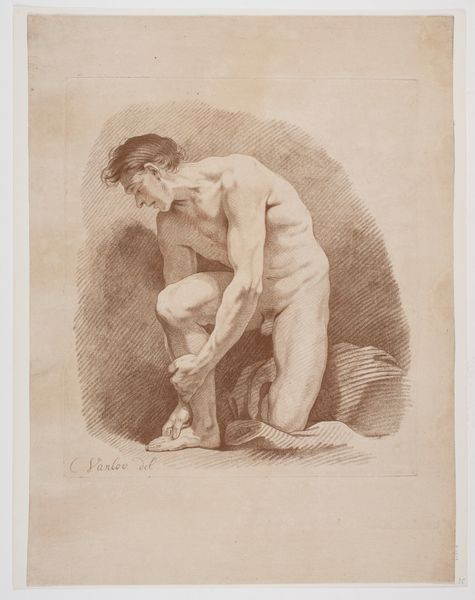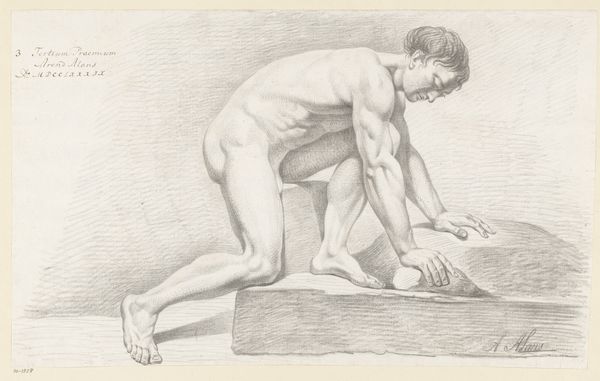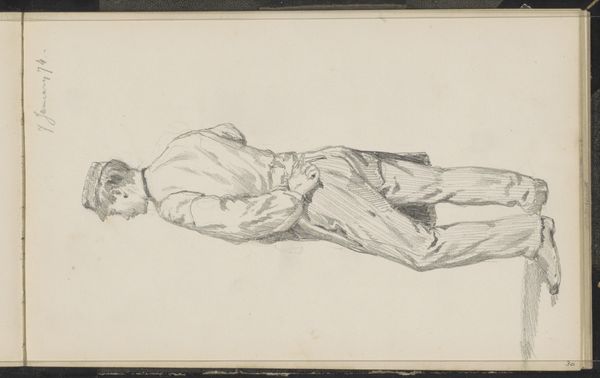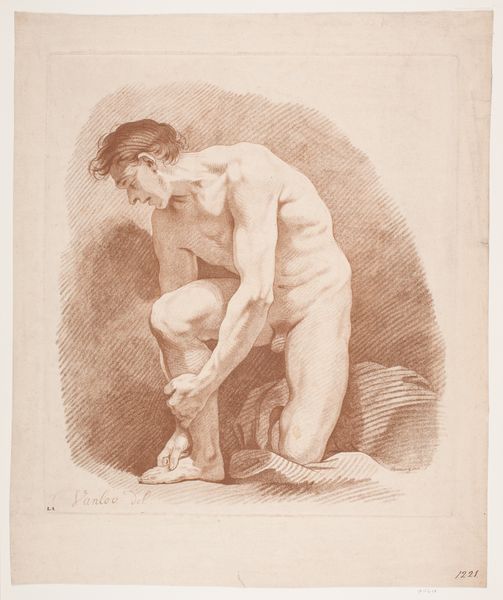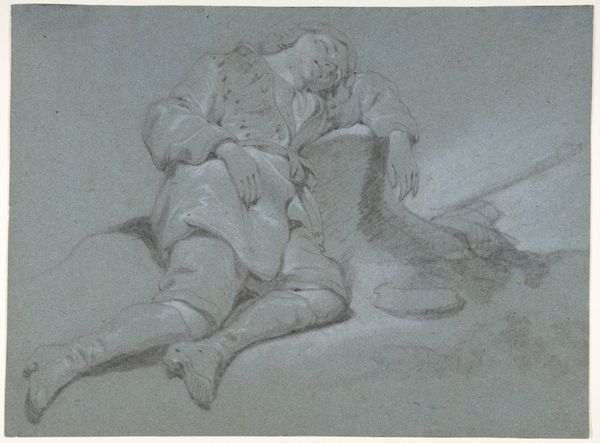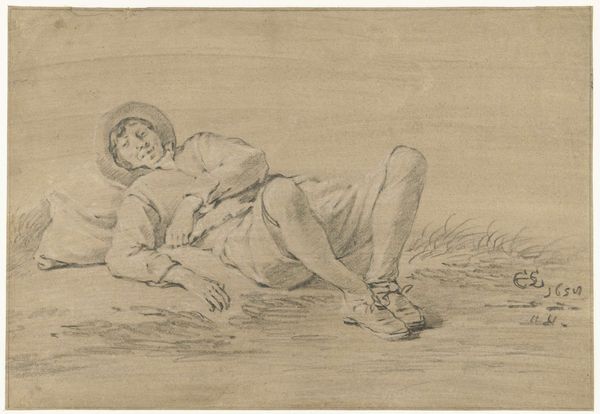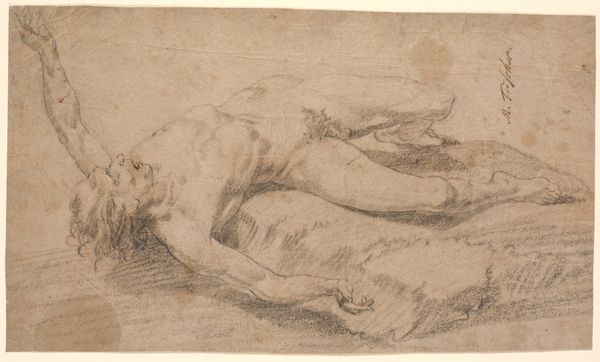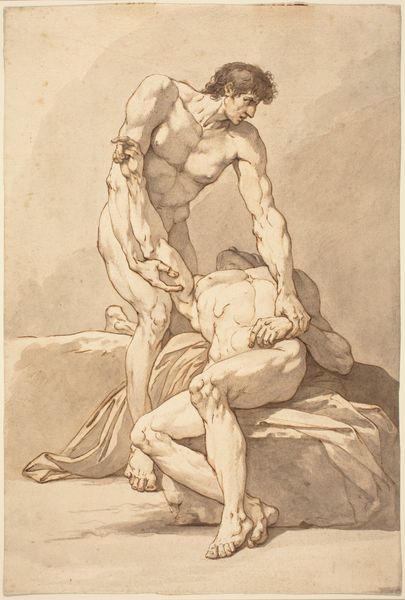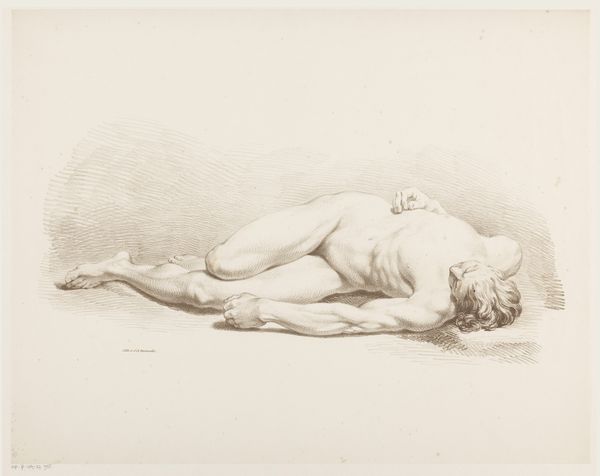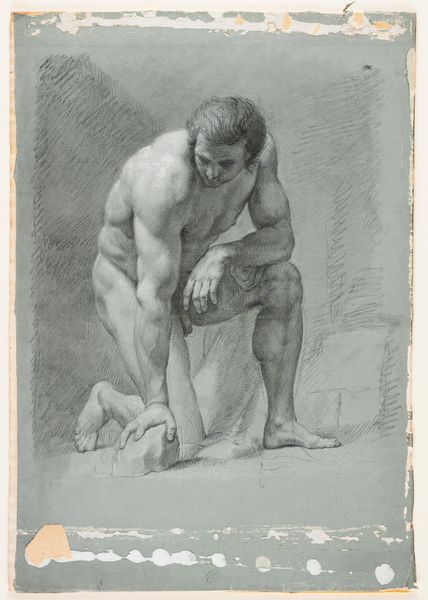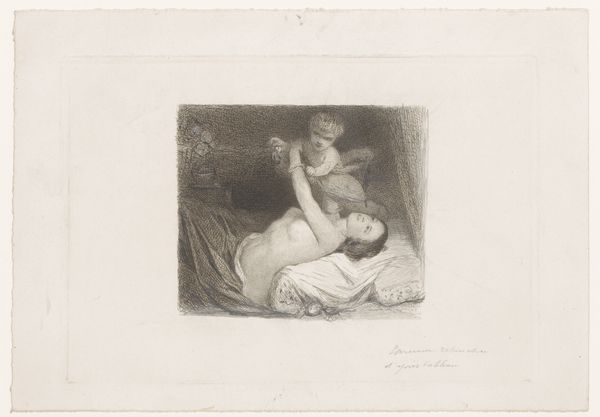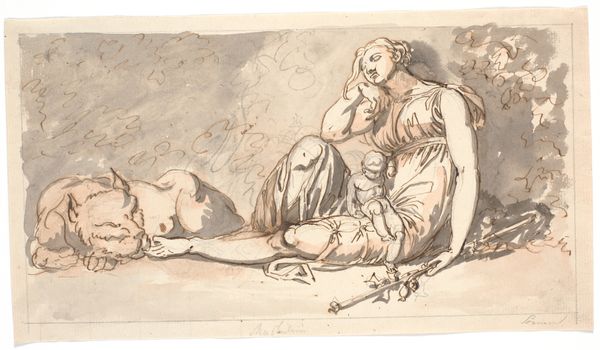
drawing, pencil
#
portrait
#
pencil drawn
#
drawing
#
baroque
#
etching
#
charcoal drawing
#
figuration
#
pencil drawing
#
pencil
#
portrait drawing
#
nude
Dimensions: height 312 mm, width 440 mm
Copyright: Rijks Museum: Open Domain
Curator: What strikes me immediately is the deep sense of introspection captured here. There's a heaviness, a pensiveness, rendered so simply with the pencil. Editor: Indeed. This is "Studie zittende man," a study of a seated man, created sometime between 1700 and 1759 by Isak Henningsen. It’s executed in pencil, which speaks volumes about the accessibility of art production during this period. Curator: The monochromatic scheme is really effective. It amplifies the impact of light and shadow across the man's form, emphasizing musculature. It invites the eye to follow contours and discover hidden shapes. Editor: Precisely! Notice how the cross-hatching not only defines form but also speaks to the artist's labor. This was a study, an exercise. And consider the economics of the time – pencil drawings were significantly more affordable, facilitating artistic training and broader dissemination of images beyond the elite. Curator: Yes, I appreciate the materiality. And the pose, slightly hunched, head bowed... it communicates vulnerability and contemplation. There's a human story here, though we know nothing about the subject. Editor: The artist chose to focus on form, light and shadow, and texture, rather than any particular narrative. Semiotically, the bowed head and positioning of the limbs speak to feelings. This isn’t about the individual’s social standing, it transcends it. It’s purely existential. Curator: But is it truly detached from its context? This exploration of the male form and use of nude imagery have certain implications for power structures, for the male gaze. The creation and consumption of such imagery must have occurred within very specific socio-economic structures. Editor: I agree that the social context of its creation and consumption would have been crucial, and is important for any thorough analysis, and also note your valid points about consumption. For now, the artist prompts us to examine not merely external identities but rather delve deeper into the figure as symbol or pure aesthetic subject matter, in a particular style. Curator: The baroque, yes, its drama is evident here, regardless of material limitations! Thinking about the Baroque fascination with capturing heightened emotion… Editor: Right. Thank you. It’s been illuminating viewing this Baroque artwork, thinking about form, pencil and material.
Comments
No comments
Be the first to comment and join the conversation on the ultimate creative platform.
